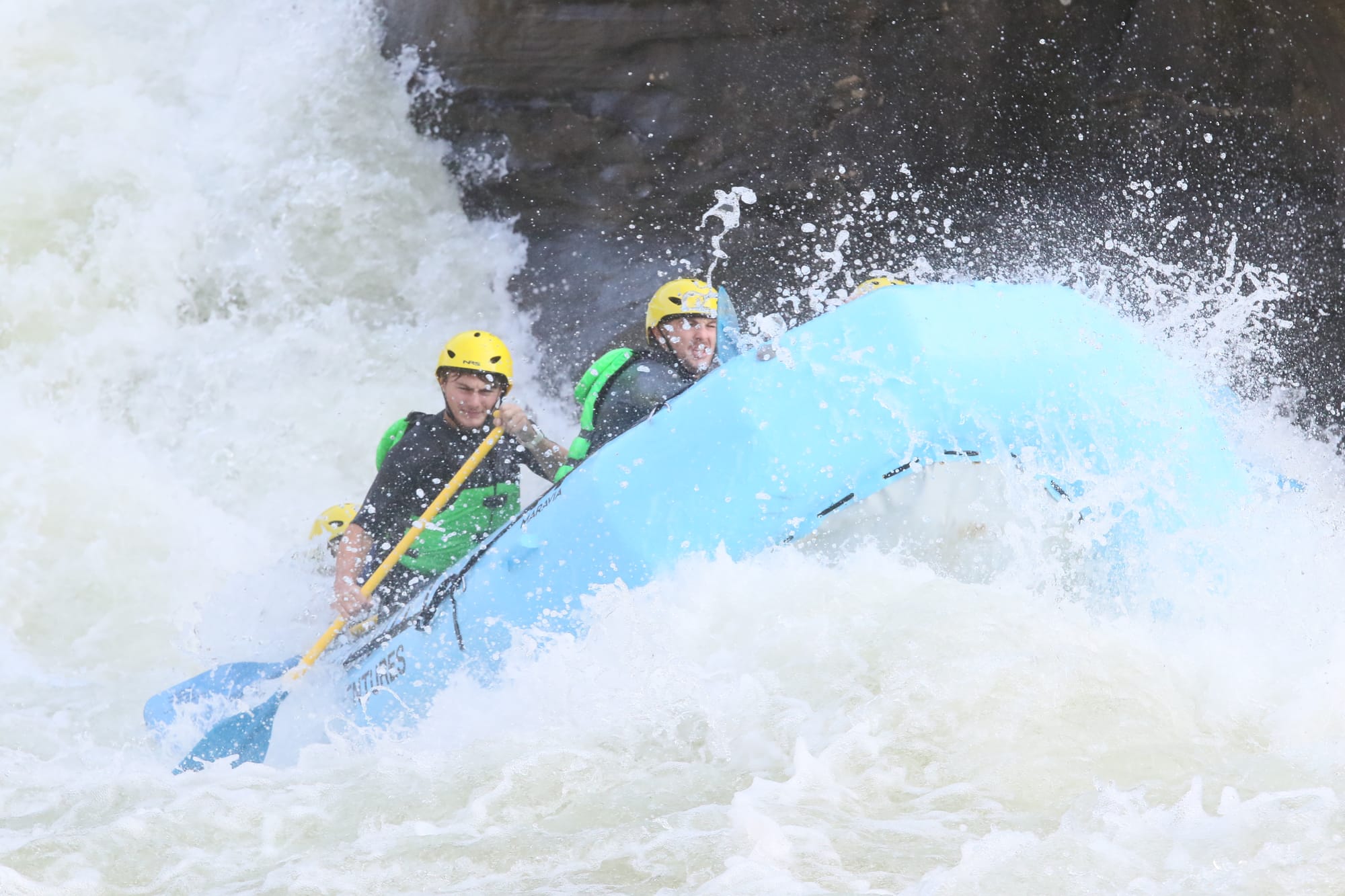Unlocking a New Wave of White Water Rafting Credentials with NFTs

White water rafting, especially on rivers like the Upper Gauley in West Virginia, is an experience that leaves a lasting impression. As one of the top three rivers in the world, the Upper Gauley delivers adrenaline-pumping Class 5 rapids that challenge even the most experienced rafters. Recently, I had the privilege of navigating these turbulent waters, thanks to the expert guides at
Adventures on the Gorge. For anyone who’s been down the Upper Gauley or other similarly challenging rivers, there’s a sense of pride in completing such a demanding course. But what if there was a way to capture that achievement digitally and make it easier to continue your white water adventures elsewhere? Enter NFTs with Phosphor and the Verax Protocol.
The Problem: How Do You Prove You’ve Rafted the Upper Gauley?
Many advanced rivers require proof of prior experience to ensure the safety of participants. Rivers like the Zambezi, Futaleufú, or the Colorado River’s Grand Canyon section are world-renowned for their difficulty and are cautious about who they let on. Completing a challenging river, like the Upper Gauley, is a fantastic qualifier to demonstrate you're ready for the next big challenge, but how do you easily prove it? This is where non-transferable NFTs and attestations can bridge the gap.

The Solution: NFTs & Verax Protocol
Imagine completing the Upper Gauley and, as part of your experience, you’re issued a non-transferable NFT directly from the rafting company’s official Ethereum-based account. For just $3, you’d own a digital keepsake that verifies your accomplishment. This NFT would be unique to you, verifiably linked to your wallet, and can't be sold or traded—it's forever tied to your achievement.
To make things even more official, the rafting company could issue an attestation through the Verax Protocol. This simple process verifies that your NFT is authentic and forge-proof, so other rafting companies or tour operators can trust that you’ve actually completed a course like the Upper Gauley.
How Does It Work?
- Non-Transferable NFTs: The NFT is like a digital certificate issued by the rafting company. It’s stored on the blockchain, meaning it can't be lost, faked, or altered. Because it's tied to your personal Ethereum wallet, it stays with you forever.
- Verax Protocol: This protocol is a trust system that allows other rafting companies to verify the authenticity of your NFT. The rafting company publishes its official wallet address on its website or social media. When someone checks your NFT, they can see it was issued by the official account. If all rafting companies use the Verax registry, it becomes an easy, universal way to verify rafting experience globally.
An Example of How This Could Work:
Let’s say you complete the Upper Gauley in West Virginia and are issued an NFT. Next year, you’re looking to tackle the Futaleufú River in Chile, known for its challenging rapids. The rafting company there wants to make sure you’re experienced enough to handle the river. Instead of having to provide a bunch of paperwork, you simply show them the NFT in your wallet, verified through Verax. Since they recognize the Upper Gauley as a top-tier qualification, they feel confident booking you on the trip.

The Benefits
For the Rafters:
- Proof of Achievement: You get a digital keepsake proving you’ve conquered one of the world’s most challenging rivers.
- Easier Access to Future Adventures: When booking trips with other rafting companies, your experience is easily verifiable.
- Potential Perks: Your NFT could unlock discounts for future trips or value-added services, like free gear rentals or photography packages, offered by the rafting company.
For the Issuing Rafting Company:
- Brand Loyalty: Offering NFTs as proof of completion encourages return customers, who might come back to your river to “collect” more NFTs or take advantage of discounts for repeat visits.
- Data Insights: Knowing which customers return can help guide marketing strategies and improve service offerings.
- Engagement Opportunities: NFT holders could be invited to exclusive events or early bookings for new courses.
For Rafting Companies in Other Geographies:
- Reduced Risk: By verifying that a customer has completed difficult rivers like the Upper Gauley, rafting companies worldwide can feel more confident in their client’s abilities. This reduces safety risks and potential liability.
- Global Network: Companies can recognize experience from other operators, fostering a more interconnected global rafting community. With NFTs as a proof of experience, this opens up the possibility of offering special packages to seasoned rafters looking to explore new waters.

A Glimpse into the Future
As rafting companies increasingly adopt blockchain technology and protocols like Verax, the process of booking advanced white water trips could become much more streamlined and secure. This setup could eventually become standard across the industry, where each rafting company, whether operating on the Zambezi River or the Noce River in Italy, can instantly verify a rafter’s qualifications with a quick glance at their NFT portfolio.
This isn't just about technology for technology's sake. It’s about creating a more connected, secure, and rewarding experience for adventurers and the companies that host them.
Conclusion
For rafters, the digital keepsake of an NFT doesn’t just remind you of an incredible journey; it’s a ticket to future adventures. For rafting companies, it offers a new way to engage customers, build trust, and mitigate risk. As more rafters seek to conquer rivers across the world, this simple, affordable, and secure verification system could become the new standard in white water rafting.
